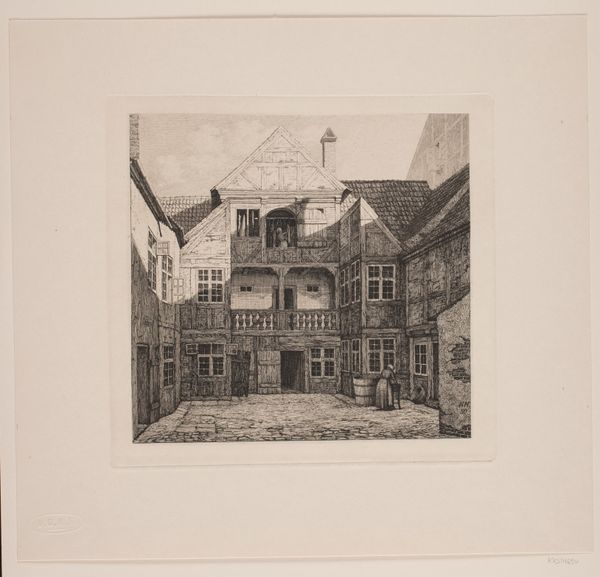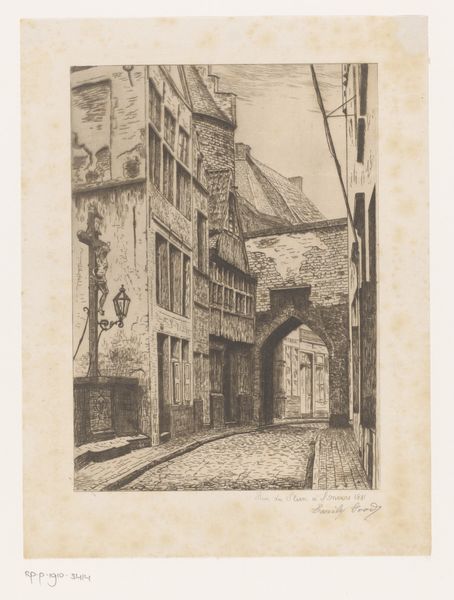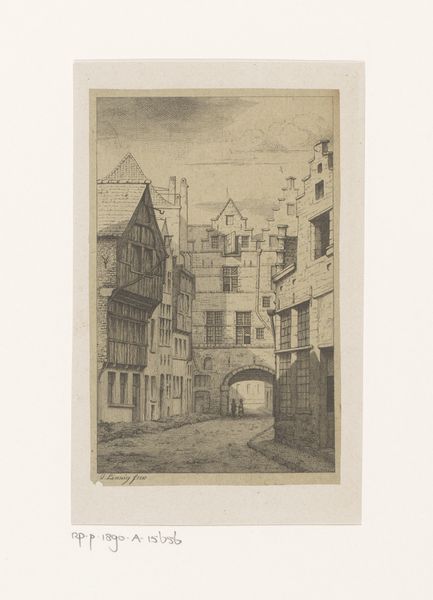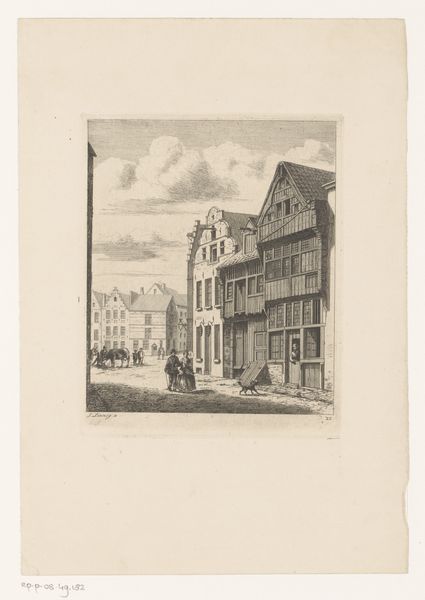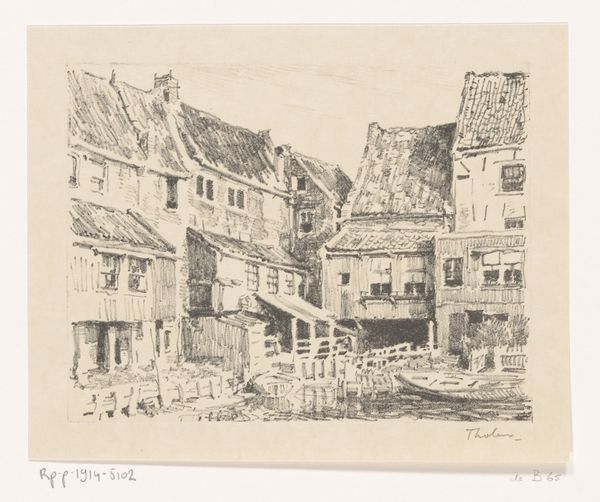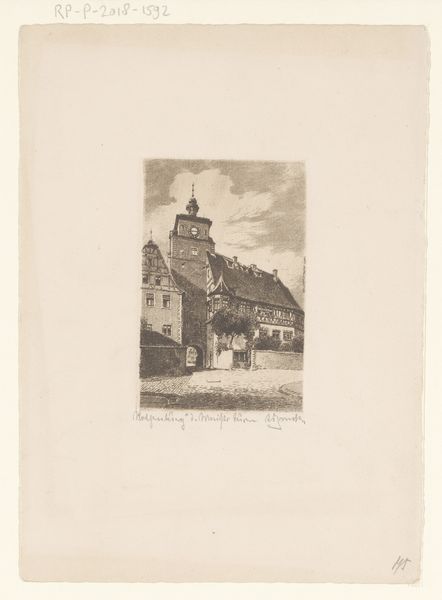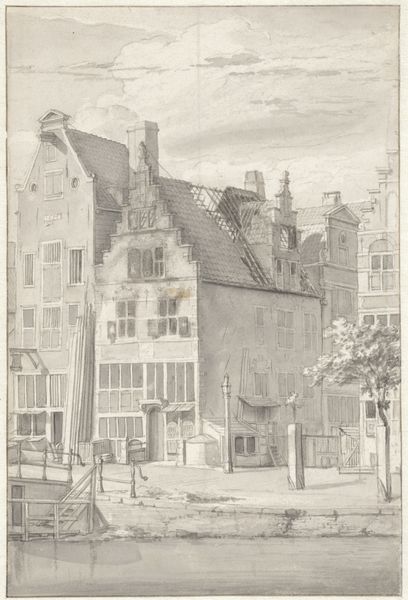
print, etching, engraving
# print
#
etching
#
landscape
#
etching
#
cityscape
#
genre-painting
#
history-painting
#
engraving
#
realism
Dimensions: 197 mm (height) x 210 mm (width) (plademaal)
Curator: Let's talk about Heinrich Hansen's 1850 etching, "Den Collinske Gård i Bredgade," a slice of old Copenhagen now residing at the SMK. Immediately, I’m struck by its dense texture and how the etching emphasizes the grain of the wood. It's a real meditation on material reality, isn't it? Editor: Yes, I see it too! It feels almost like looking at a memory, distant and a little faded, a reconstruction. All those sharp angles converging, drawing my eye to the woman by the barrel in the lower-right – a rather forlorn figure. What do you make of her positioning? Curator: Well, let’s not divorce her from the built environment around her. I think Hansen is concerned here with recording, quite pragmatically, how the building and the activity taking place at this house is essential. The hatching that renders this building really captures its materiality – the way the wood would feel, the textures in those old stones. It feels like a document of making as much as a scene. Editor: Agreed, yet these meticulously etched details elevate the everyday to something almost dreamlike. Notice how the artist emphasizes verticality; even the courtyard's cobbled pattern reinforces upward motion, drawing our attention to figures peering from an upper window. Could these elements hold some deeper social significance? Curator: Social? Yes, of course. It’s crucial to remember that etchings like these would have been reproduced and circulated fairly widely. Here, Hansen’s working for a market interested in both the quaint charm and rapidly disappearing physical history of the old city. People consuming this kind of imagery want some record of material culture that is giving way to urban progress. It is, in a sense, mass produced nostalgia. Editor: And it is that nostalgia, perhaps, that makes me consider it more. Those small windows and high vantage points resonate across centuries, evoking enduring symbols of enclosure and observation. Those details could prompt a viewer to consider those spaces both as architectural realities, and cultural symbols, then and now. What do you make of that? Curator: I like the turn towards timeless symbolism, but in truth, for me, it is really grounded in the processes of its creation. That very sharp etching process and attention to fine, repeated lines; I just keep thinking of workshops, materials and labour. Editor: Well, I suppose that focus shows how very different readings can arise from the very same set of lines and tones. Curator: Exactly.
Comments
No comments
Be the first to comment and join the conversation on the ultimate creative platform.
